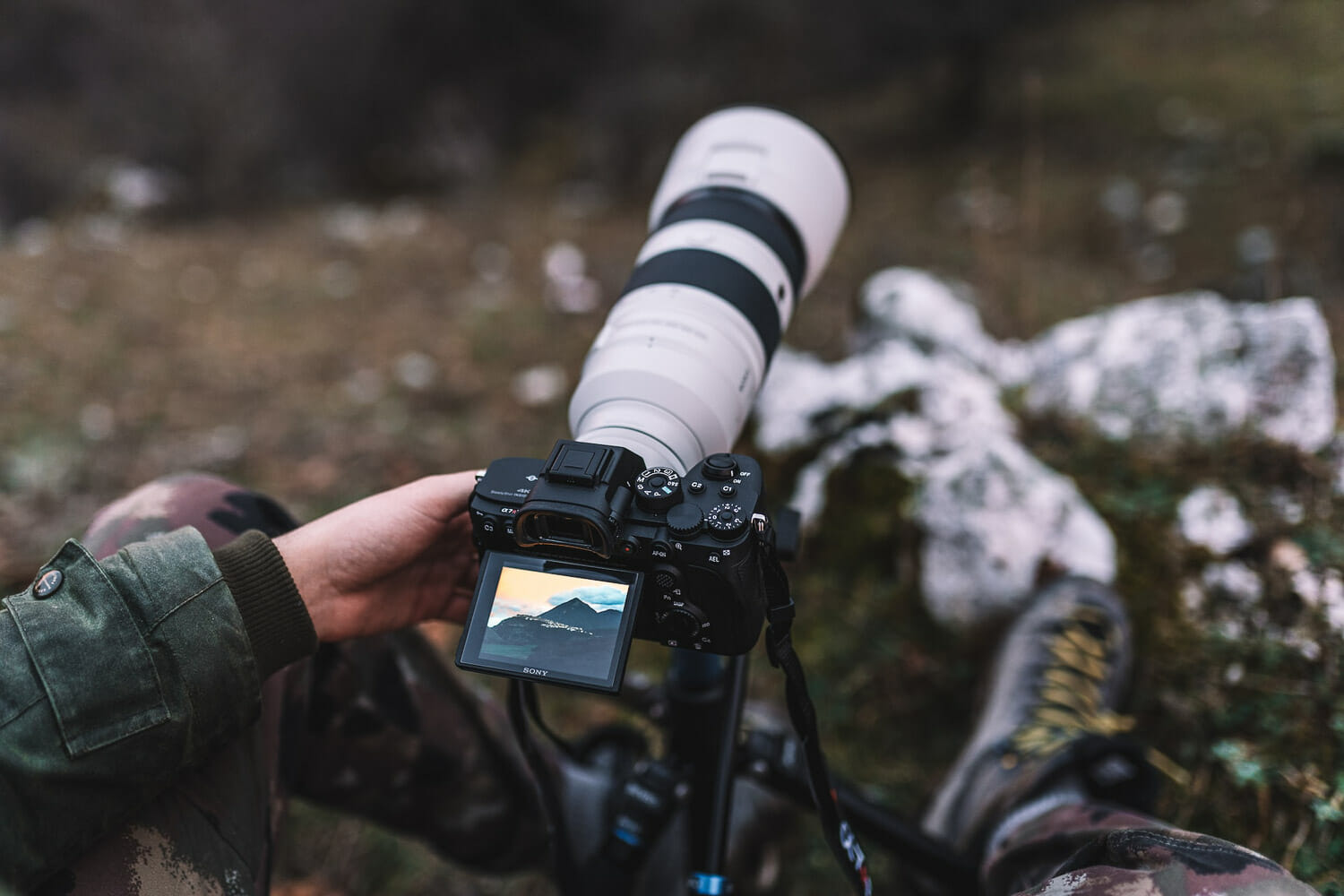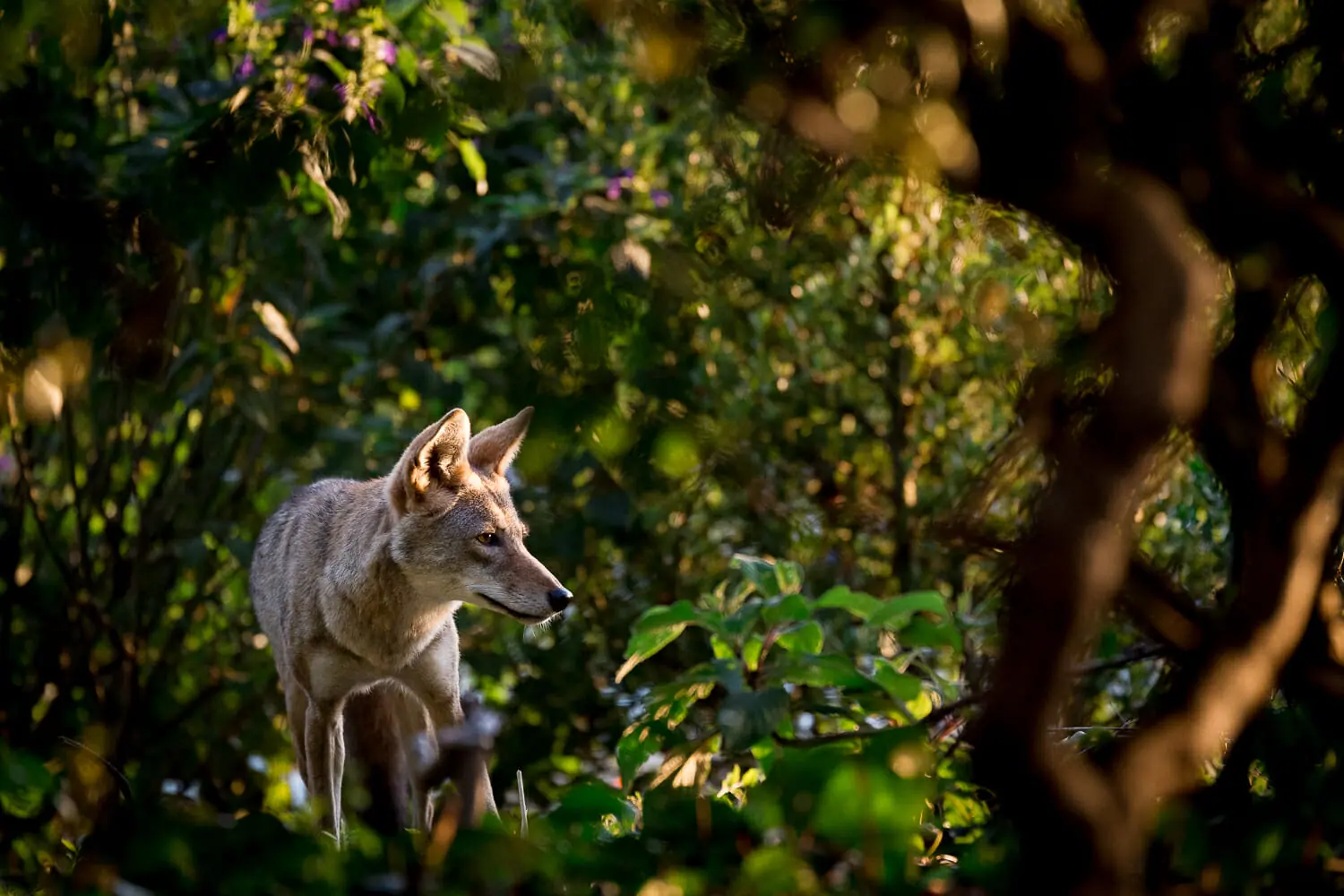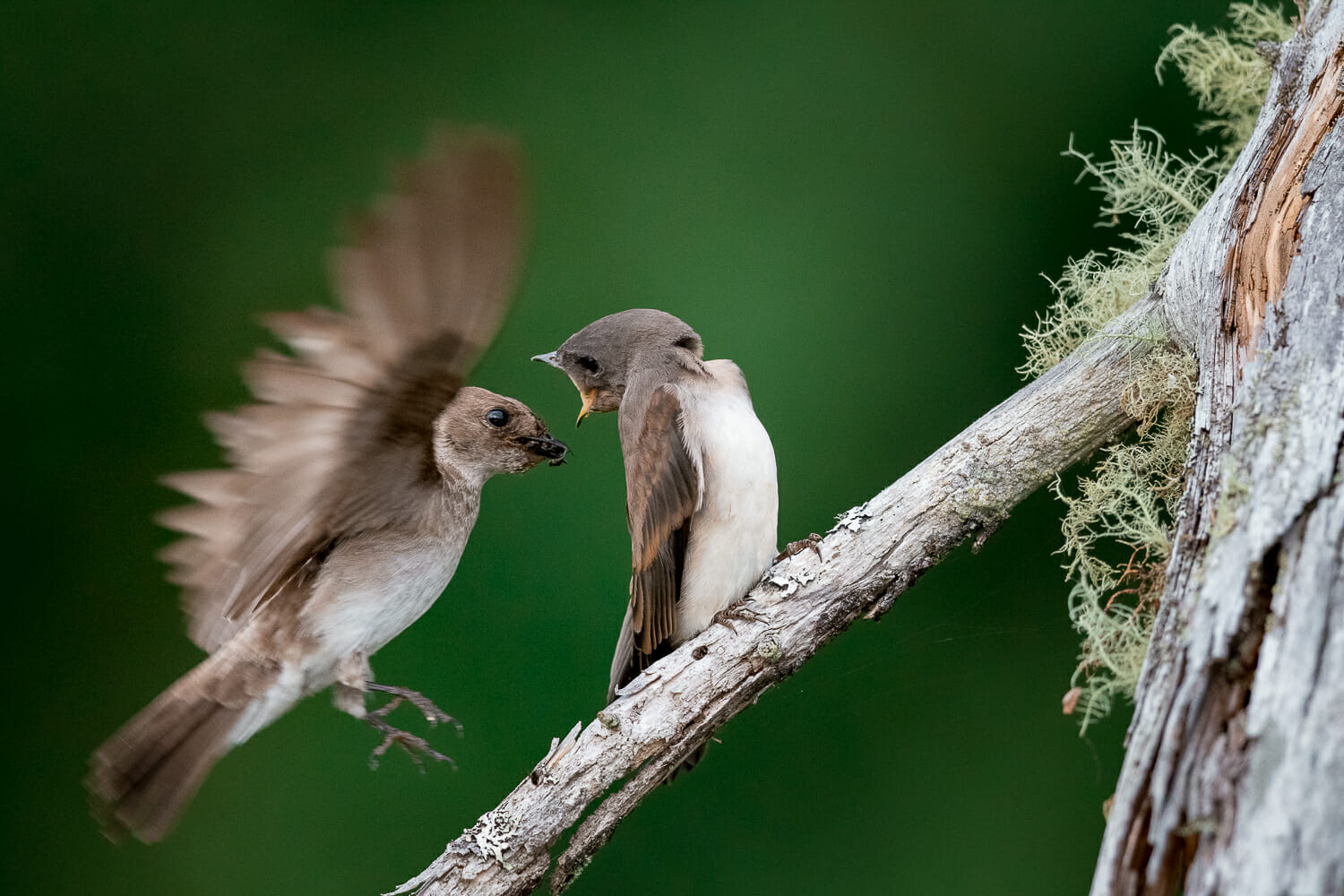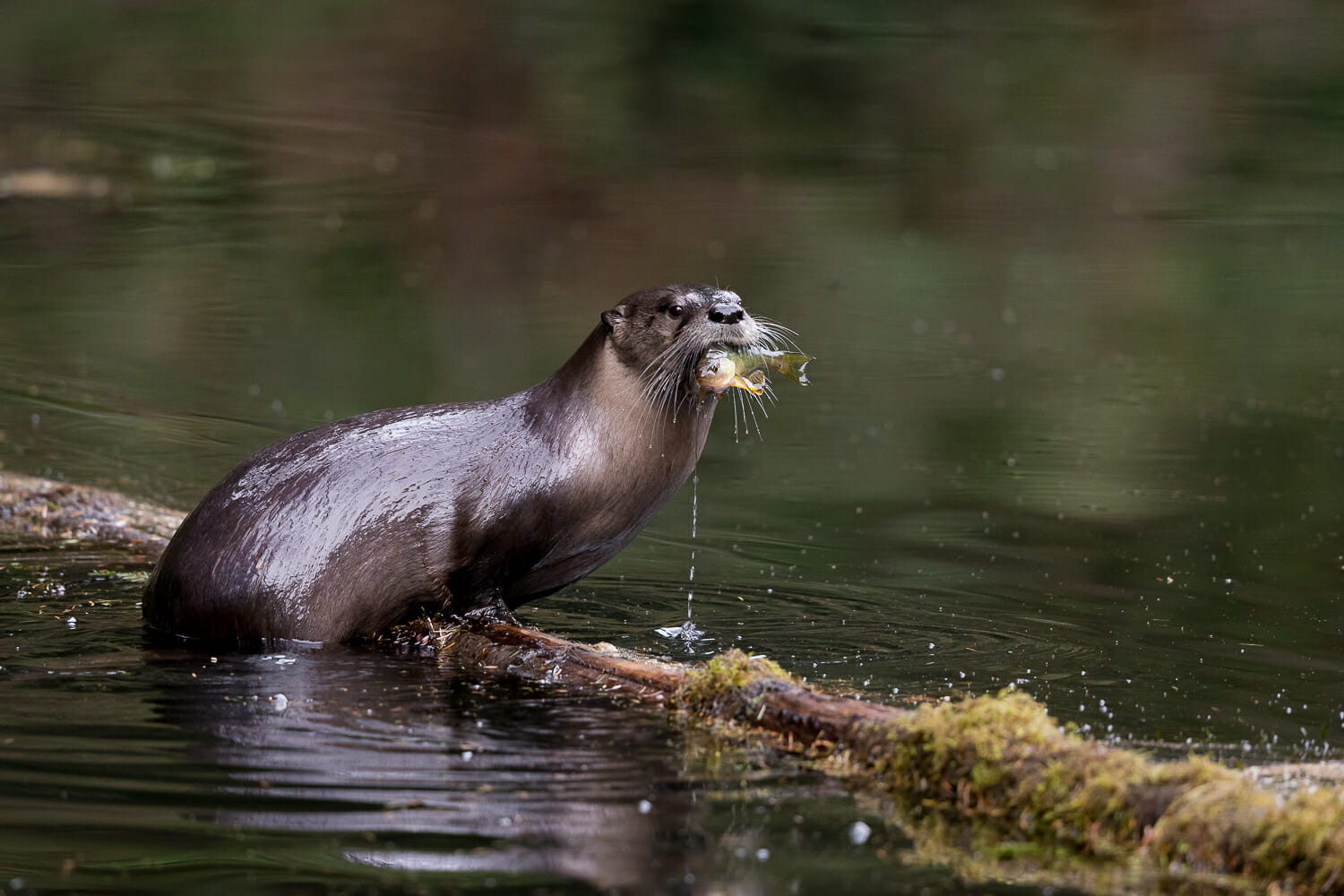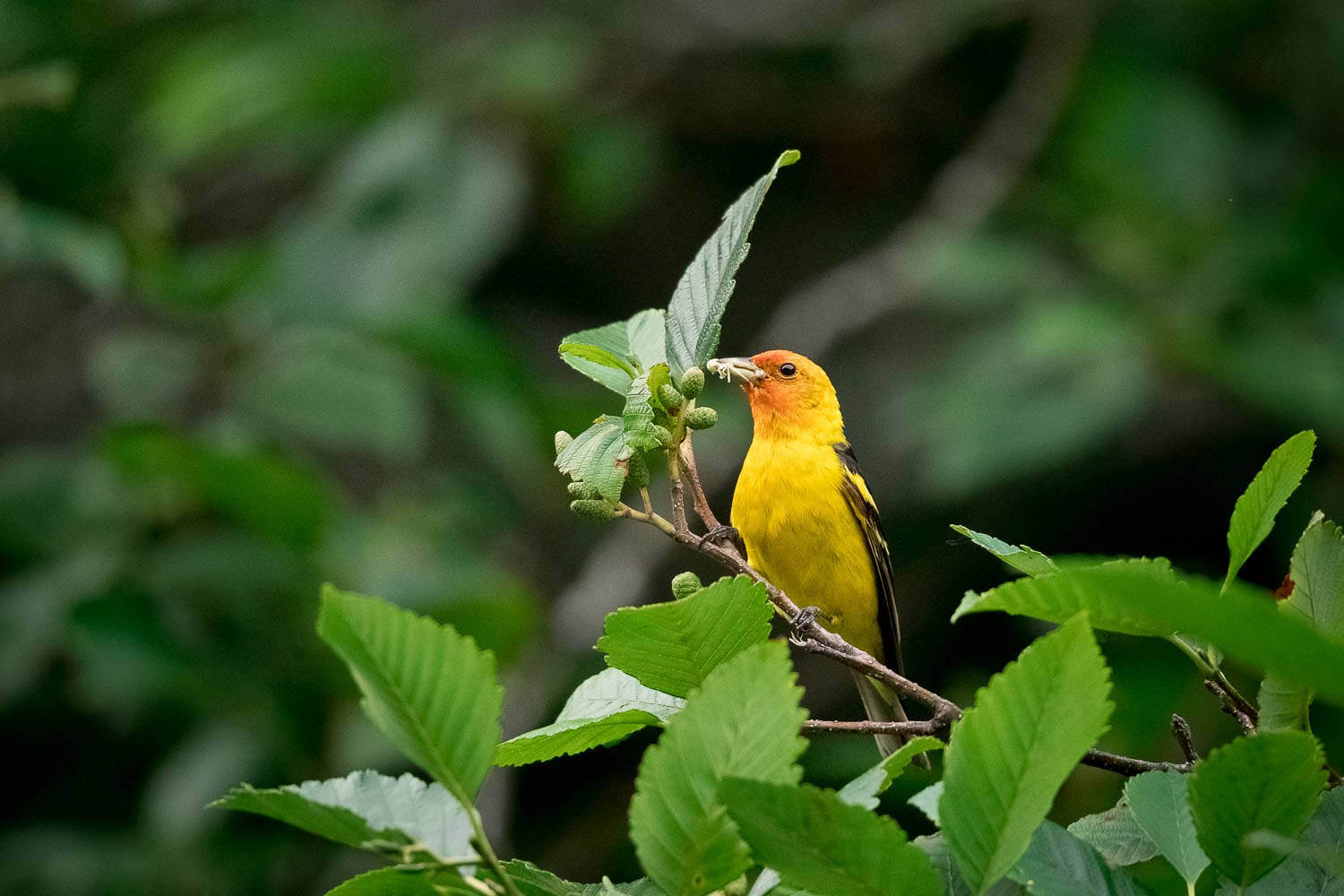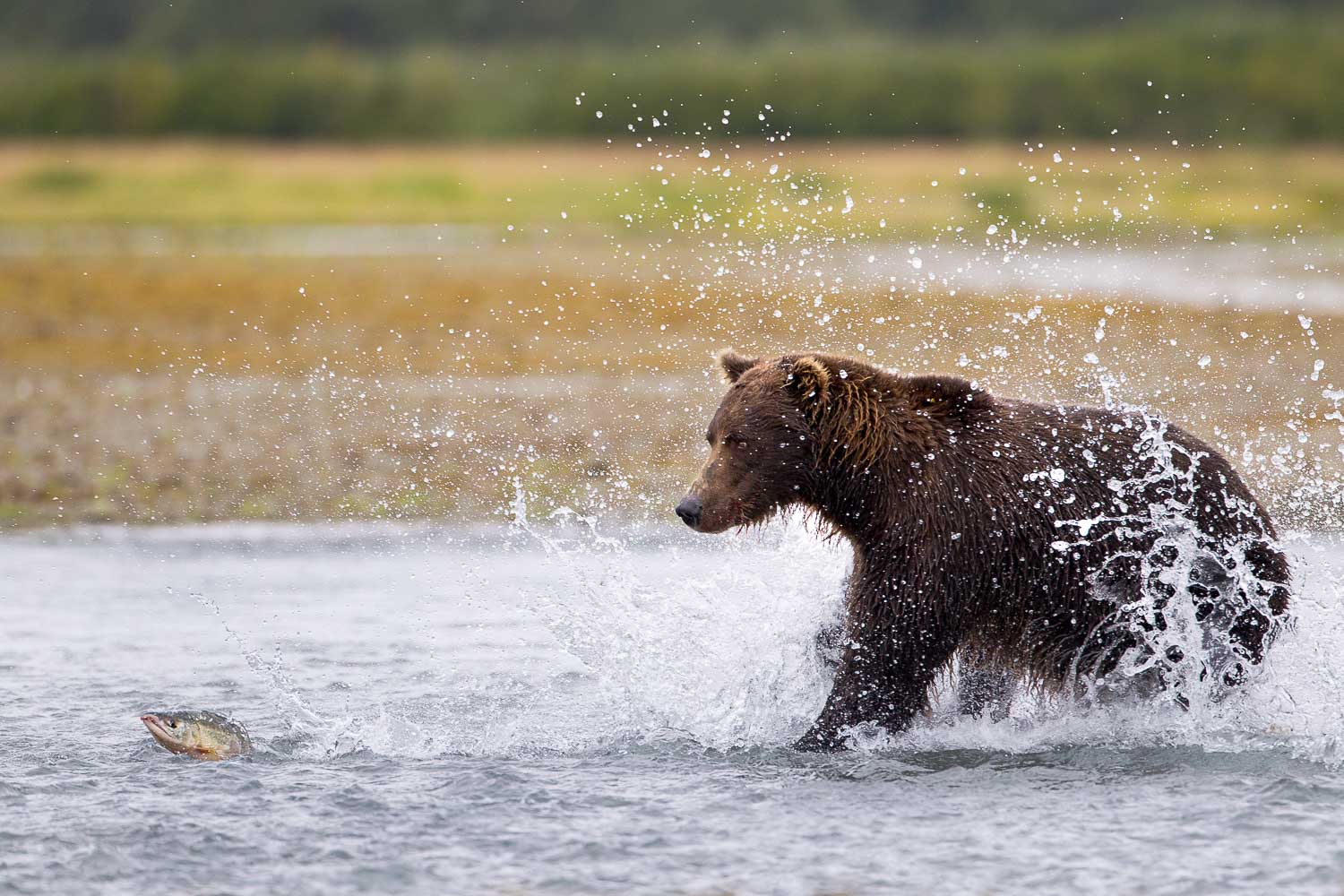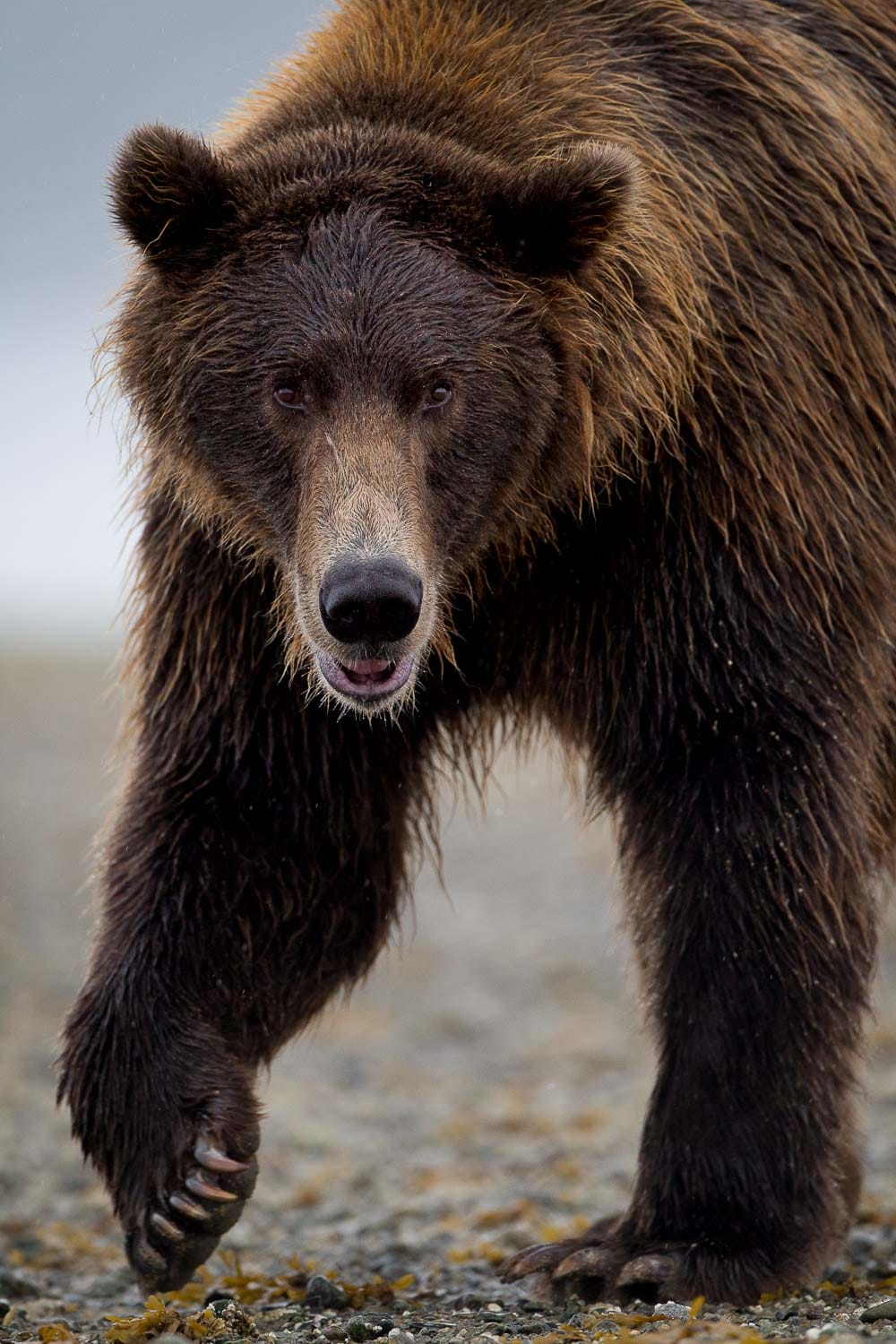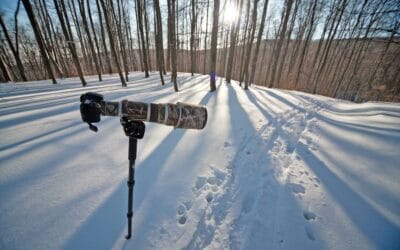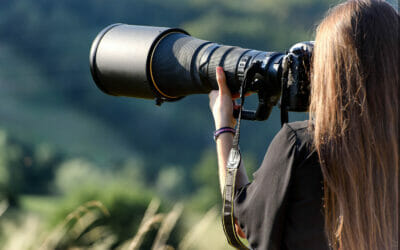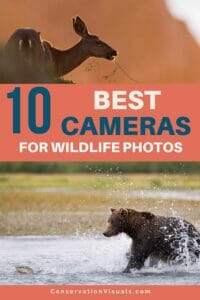Contents
- What camera do you need?
- Choosing a brand
- How we picked
- Best Pro-Level Sony
- Best Pro-Level Canon
- Best Pro-Level Nikon
- Best Mid-Level Sony
- Best Mid-Level Canon
- Best Mid-Level Nikon
- Best Mid-Level Olympus
- Best Prosumer
- Best Budget Mirrorless
- Best Budget DSLR
- Best for Beginners
- What to look for
- How many megapixels?
- Is mirrorless better than DSLR?
You've come to the right place if you're an aspiring wildlife photographer or a seasoned professional looking to upgrade your gear.
We've reviewed and curated a list of the best wildlife cameras, helping you navigate through the top budget-friendly options to high-end tech marvels.
Contents
- What camera do you need for wildlife?
- Choosing a brand
- How we picked the best cameras for bird photography
- Best Pro-Level Sony
- Best Pro-Level Canon
- Best Pro-Level Nikon
- Best Mid-Level Sony
- Best Mid-Level Canon
- Best Mid-Level Nikon
- Best Mid-Level Olympus
- Best Prosumer
- Best Budget Mirrorless
- Best Budget DSLR
- Best Beginner Camera
- What to look for when shopping for the best camera for wildlife photography
- How many megapixels do you need for wildlife photography?
- Is mirrorless better than DSLR for wildlife photography?
- How to choose the best camera for wildlife photography for YOU
Our picks at a glance
What camera do you need for wildlife photography?
Before we review our top choices, let's discuss how you can more easily navigate the specifications and features to pick the perfect camera for your needs.
Lots of details get thrown around – maximum ISO and shutter speed, frame rates, sensors and AF and buffer, oh my! But really, there are four core things to zero in on.
1. Sensor size explained
Megapixellllllls! It's what most people jump straight to when looking at how “good” a camera is.
But there's more to resolution than picking whichever camera has the most megapixels.
Think of the sensor as the retina of your camera. The larger it is, the more light it can capture, making it a champion in low-light conditions and giving you those crisp, detailed shots even from a distance.
Full-frame sensors are the gold standard, especially in wildlife photography, offering superior image quality and depth of field. Plus, a large full-frame sensor is great because you have a big file that you can crop and still make a nice-sized print.
BUT, crop sensors are also a darling of many wildlife photographers.
Why? Because they give you a bit of a “boost” on your lens's reach. Imagine you're trying to capture a shy bird in the far-off branches. A crop sensor camera, because of its smaller sensor size, effectively multiplies the lens's focal length, getting you closer to your subject without moving an inch.
It's like having a built-in zoom feature that can make a significant difference when it comes to wildlife photography.
Plus, they're generally lighter and less expensive, which can be a huge advantage when you're trekking through the wilderness on the lookout for your next great shot.
Now, onto megapixels — these little guys are all about the resolution. More megapixels mean you can capture incredibly detailed images, perfect for those breathtaking close-ups of wildlife in their natural habitats.
But remember, it's not just about the numbers; the quality of the sensor and how it interprets this information plays a huge part in getting the images you're after.
Because we now have software tools like Topaz that can easily upscale an image – making it much larger without losing any quality – having a gazillion megapixels isn't the big goal that it used to be.
So, when deciding on a camera, consider whether a full-frame or crop sensor seems like the best fit for you, and then look at the megapixels.
We talk more about how many megapixels you want for wildlife photography farther down in this article.
Photo: Jaymi Heimbuch
2. Autofocus explained
The latest cameras have brought us some pretty game-changing AF features. We're talking about lightning-fast focusing speeds and incredibly accurate subject tracking.
Many of today's wildlife photography cameras also come equipped with eye-tracking AF. Yes, you read that right. These cameras can lock onto the eye of an animal and keep focus on it as it moves.
Imagine you're out in the wild, and a majestic eagle takes flight. With the enhanced AF systems in today's cameras, you're much more likely to snag that crisp, clear shot of the eagle in full glory, even against a busy background or in less-than-ideal lighting conditions.
Accurate autofocus tracking is key in wildlife photography, so that's a big feature to look for in your ideal camera. But so too is the AF coverage area – or, how many autofocus points a camera has.
The newest models offer wide coverage areas, meaning more of your frame is covered by autofocus points.
This gives you the flexibility to compose your shot creatively – such as with the subject far off to the side of the frame – without worrying about whether your subject will be in focus.
So, depending on your goals as a wildlife photographer, check out the number of autofocus points a camera has and take this into consideration.
Photo: Jaymi Heimbuch
3. Burst speed and buffering explained
These two features that can really make a difference in wildlife photography.
Burst speed, or continuous shooting rate, refers to how many photos your camera can take in a second. It's measured in frames per second (fps).
A higher fps means you can capture more images in a shorter amount of time, which is perfect for getting that one shot where everything looks just right – especially when you're dealing with subjects like birds in flight, or two elks duking it out during a rut.
Now, as amazing as it is to shoot lots of photos quickly, your camera needs a place to store these images temporarily while it's processing them.
This is where buffering comes in.
Think of the buffer like a waiting room where your images hang out until they're processed and saved to your memory card. If your buffer fills up, you have to wait for it to clear before you can continue shooting at your camera's maximum burst speed.
For wildlife photographers, having a high burst speed combined with a sizable buffer is like having a superpower. Nature is unpredictable. Animals move fast, often unexpectedly, so having the ability to shoot many high-quality images quickly increases your chances of capturing that perfect, once-in-a-lifetime moment.
Plus, more shots mean more options to choose from during editing—ensuring you've got the best capture with the sharpest details and just the right posture or expression.
Photo: Jaymi Heimbuch
4. Where are you headed with your photography?
It's easy to get wrapped up in the bells and whistles of camera models, so the fourth big thing to keep in mind in choosing is where you want to be with your photography in 3 to 5 years.
A camera is an investment, so you want to make a choice that you'll be happy with for several years.
If you're a hobbyist and simply want a solid camera to take on camping trips or to capture local wildlife when you're hiking, then you can likely stick with a mid-range or beginner camera. Something smaller, lightweight, and has the features you need but doesn't break the bank.
You may even focus on bridge cameras in your search. A bridge camera has the user-friendliness of a point-and-shoot with the powerful features and zoom capabilities of a DSLR, without the need for interchangeable lenses.
Most wildlife photographers go for cameras with interchangeable lenses, which help them adapt capabilities based on subject matter.
But that might not be your cup of tea.
On the other hand, if you're a professional, or have ambitions to be a really serious photographer making award-winning images, then you might as well put in the investment now in a higher-end camera that you'll be happy with as your skills (and perfectionism!) grow.
Sure you can always upgrade later, but in our experience, if you're really serious, you might as well learn to use the tools that get you the results you want.
Photo: Jaymi Heimbuch
A note on choosing among camera brands
Choosing between camera brands, especially giants like Sony, Nikon, and Canon, can sometimes feel overwhelming.
Each of these brands is constantly competing to put out the best new model, pushing the boundaries of camera technology to win over the hearts of photographers.
But here's the thing—when it comes down to picking a camera for nature photography, it's less about brand and more about the specific features that meet your needs.
All these brands offer something unique, from Sony's cutting-edge autofocus and compact mirrorless bodies, Nikon's incredible lens selection and ergonomics, to Canon's color science and user-friendly interface.
So, consider which brand has the camera body (and the lens selection) that best complement your style and aspirations.
Our team shoots with all the major brands, and we agree that the field is evolving so fast—especially when it comes to mirrorless camera bodies and the lenses that go with them (we talk more about mirrorless vs. DSLR below)—that it's more a matter of choosing one and sticking with it because they're all pretty amazing.
Now, on to the camera bodies we love best for wildlife photography!
Photo: Jaymi Heimbuch
How we picked the best cameras for wildlife photography
To choose the best wildlife cameras for you, we combine personal experience, insights from fellow pros and industry experts, editorial and user reviews, and details from manufacturers. We've carefully weighed the pros and cons of each wildlife camera and put only what we feel is the best selection available into our recommendation guides.
We've curated a selection of cameras meant to meet the needs of different goals and budgets to help you pick the best camera for wildlife photography for you! Factors we consider include weight, ISO capabilities, autofocus points, frames per second, buffering, image stabilization, and more features that allow you to have the best wildlife photography experience.
We focused on interchangeable lens cameras since wildlife photography requires a mix of lenses. We also included a mix of entry-level and professional camera bodies and a variety of camera manufacturers.
For advice on what to consider in a wildlife photography camera and how to choose the right camera body for you, use the table of contents to jump to those sections.
Best Cameras for Wildlife Photography: Our Reviews & Recommendations
Sony Alpha 1
Top-tier choice for wildlife photography
- Captures high-quality images with incredible detail, definition, and clarity
- High speed continuous shooting
- Superb low-light performance
- Advanced and accurate autofocus system
- Dust and moisture resistant
- Integrated Wi-Fi and Bluetooth
- Long battery life
- Relatively expensive
- Not all lenses may be compatible
- No 4K video at 60 fps
- Body Type: Mirrorless
- Sensor: Full-frame CMOS (35.9 x 24 mm)
- Effective Megapixels: 50.1
- Autofocus Points: 759 (in-phase detection)
- Continuous Shooting Burst Rate: 30 fps
- Buffer: 155 compressed RAW frames or 165 JPEGs at 30 fps
- Image Stabilization: Yes
- ISO Sensitivity: 100-32,000 (expands to 50-102,400)
- Weight: 1.6 lbs (with battery and memory card)
- Price Range: $$$
The Sony Alpha 1 stands out as a superior choice for wildlife photography, boasting a 50.1 MP full-frame sensor that delivers exceptionally detailed and high-quality images.
Its remarkable speed, with continuous shooting of up to 30 fps, makes it perfect for capturing wildlife in motion.
The camera excels in low-light conditions, courtesy of its wide ISO range, while the advanced autofocus system effectively tracks moving subjects.
Its robust construction endures the challenges of outdoor environments, and integrated Wi-Fi and Bluetooth ensure easy sharing and backup of images.
The battery life is also commendable, supporting extended shooting sessions.
While pricey, the Sony Alpha 1's features make it a worthy investment for serious wildlife photographers, and it has quickly become a top choice among professional wildlife photographers.
BEST PRICES
Canon EOS R3
Impressive speed and an even more impressive autofocus system
- High speed of up to 30 fps
- Superior image quality
- Advanced and accurate autofocus system
- Magnesium alloy body and weather-sealing
- Impressive low-light performance
- Large buffer capacity
- Excellent battery life
- Integrated connectivity
- High price point
- Robust build contributes to its weight
- Dual card slots are for two different types of cards
- Complex features and settings
- Body Type: Mirrorless
- Sensor: Full-frame CMOS (36.0 x 24.0 mm)
- Effective Megapixels: 24.1
- Autofocus Points: 1053
- Continuous Shooting Burst Rate: ~30 fps with electronic shutter and up to 12 fps with mechanical shutter
- Buffer: 540 JPEG or 140 RAW files at 30 fps
- Image Stabilization: Yes
- ISO Sensitivity: 100-102,400 (expands to 204,800)
- Weight: 1.81 lbs (camera body only), 2.2 lbs (incl. battery and memory card)
- Price Range:$$$
The Canon EOS R3 is a top-tier professional wildlife camera with drool-worthy specs.
It fuses mirrorless technology progression and potent performance powered by the DIGIC X Image Processor. Its unique design boasts a back-illuminated stacked 24.1MP full frame resolution that ensures quicker read-out speeds and significantly reduces “rolling shutter” distortion. This results in crisper images in low light conditions and the capability to capture authentic 14-bit RAW files in the electronic shutter mode.
While the sensor size is smaller than the R5, it makes up for it with these other aspects.
And, with the impressive 30 fps in electronic shutter mode, it is perfect for shooting wildlife.
A drawback is that while it has dual card slots, one is for the CFexpress Type B, and one is for SD/SDHC/SDXC. Why Canon didn't simply put in two slots for the superior CFexpress cards – which write up to 6 times faster than the best SDs – is beyond us. If you're investing in a camera body this pricey, you'll pony up for the more expensive, better cards.
With that minor check against the R3 aside, we love it. Coupling the resilience of the EOS-1D series camera with the finesse of the EOS R5, the R3 doesn't just merely stand its ground, it sets itself apart in a league of its own.
We are BIG fans of this full-frame camera body, and if you're looking for something with all the bells and whistles, the R3 is a great choice.
BEST PRICES
Nikon Z 9
The ultimate in performance and versatility
- High resolution
- Essentially bottomless buffer depth
- Fast and accurate autofocus
- Impressive burst shooting speed
- Excellent low-light performance
- 8K video recording
- Durable, weather-sealed body
- Pricey
- Relatively heavy
- Body Type: Mirrorless
- Sensor: Stacked CMOS sensor (35.9 x 23.9 mm)
- Effective Megapixels: 45.7
- Autofocus Points: 493
- Continuous Shooting Burst Rate: 20 fps
- Buffer: 1000 RAW or JPEG frames at 20 fps
- Image Stabilization: Yes
- ISO Sensitivity: 64-25,600
- Weight: 2.95 lbs (with battery and memory card)
- Price Range: $$$
The Nikon Z 9 takes wildlife photography to the next level with its outstanding feature set. The high-resolution full-frame sensor captures beautifully detailed and vibrant images, and the speedy, accurate autofocus ensures you never miss a moment.
The impressive burst shooting capabilities, coupled with excellent low-light performance and 8K video recording, make the Z 9 an exceptional tool for capturing wildlife.
Although the high price and weight may be a concern for some, the Z 9 is a worthwhile investment for those seeking top-notch performance and versatility in wildlife photography.
BEST PRICES
Sony Alpha 7R III
Exceptional image quality and performance
- Exceptional image quality
- High-speed autofocus and tracking
- Impressive ISO range for the price
- Built-in image stabilization
- Supports 4K video recording
- Dual memory card slots
- Weather-sealed body
- Complex menu system
- Limited battery life compared to similar bodies
- Slow writing speed
- Body Type: Mirrorless
- Sensor: Full-frame Exmor R CMOS sensor (35.9 x 24.0 mm)
- Effective Megapixels: 42.4
- Autofocus Points: 399 (phase-detection), 425 (contrast)
- Continuous Shooting Burst Rate: 10 fps
- Buffer: 76 Large/Extra Fine JPEGs, 28 uncompressed RAW images, and 28 for uncompressed RAW + Large/Extra Fine JPEGs
- Image Stabilization: Yes
- ISO Sensitivity: 100–32,000 (expandable to 50-102,400)
- Weight: 1.45 lbs (incl. battery and memory card)
- Price Range: $$
The Sony Alpha 7R III stands out with its exceptional image quality and robust performance.
The 42.4MP full frame resolution captures incredibly detailed and vivid images, making it perfect for highlighting the intricate beauty of wildlife.
Its high-speed autofocus and tracking, supported by 399 phase-detection AF points, ensure precise capture of fast-moving animals. The camera's robust, weather-sealed body can withstand harsh outdoor conditions, and the dual memory card slots offer both ample storage and backup solutions.
For enthusiasts wanting to take their photography to the next level, the Sony Alpha 7R III will help you get there.
BEST PRICES
Canon EOS R5
Superior autofocus capabilities and high-resolution sensor
- Excellent image quality
- High-resolution sensor
- Fast autofocus performance
- Robust image stabilization
- High-speed continuous shooting
- Durable and weather-sealed body
- Complex menu system may be overwhelming for novice photographers
- Potential overheating issues when shooting in 8K for extended periods
- Shorter battery life compared to other competitors
- Body Type: Mirrorless
- Sensor: Full-frame CMOS (36 x 24 mm)
- Effective Megapixels: 45
- Autofocus Points: 1,053
- Continuous Shooting Burst Rate: 12 fps (mechanical shutter), 20 fps (electronic shutter)
- Buffer: 182 RAW images at 12 fps
- Image Stabilization: Yes
- ISO Sensitivity: 100-51,200 (expands to 102,400)
- Weight: 1.62 lbs (incl. battery and memory card)
- Price Range: $$
The Canon EOS R5 is a stellar choice for wildlife photography, combining a high-resolution sensor, a robust image stabilization system, and high-speed continuous shooting capabilities.
Designed with sports and wildlife photography in mind, the excellent image quality, the fast autofocus system, and the durable, weather-sealed body make it an obvious contender.
Its full-frame CMOS sensor and wide ISO range contribute to its high performance in various lighting conditions.
Plus, the huge sensor makes it a great option for shooting distant wildlife, as you have plenty of room to crop in during post-processing.
Overall, it's a well-balanced, high-performing camera that offers great value for its price range, making it suitable for both beginners and experienced wildlife photographers.
The downside is the relatively short battery life. Plan to have several spare batteries ready to go, or opt for the additional battery grip.
But overall, this is one of the top wildlife photography cameras on the market for a mid-range budget and a great option if you're moving from a Canon DSLR camera into mirrorless.
BEST PRICES
Nikon D850
Efficient and versatile camera for wildlife photography
- Impressive dynamic range
- High resolution
- Weather-sealed
- Commendable ISO range
- Long battery life
- Dual card slots
- 4K UHD video
- Silent shooting mode
- Heavier weight
- No built-in image stabilization
- No built-in Wi-Fi
- Body Type: DSLR
- Sensor: Full-frame CMOS (35.9 x 23.9 mm)
- Effective Megapixels: 45.7
- Autofocus Points: 153 (99 cross-type)
- Continuous Shooting Burst Rate: 7 fps (9 fps with a grip)
- Buffer: 51-54 fps of 14-bit RAW files with lossless compression
- Image Stabilization: No
- ISO Sensitivity: 64-25,600 (expands to 32-102,400)
- Weight: 2.02 lbs (camera body only)
- Price Range: $$$
The Nikon D850 stands out as a strong mid-range camera for wildlife photography, boasting a full-frame CMOS sensor with a superior 45.7 MP resolution to capture detailed images of wildlife.
While it lacks built-in image stabilization, the ISO range, expandable to 32-102400, ensures excellent performance in varied lighting conditions.
The continuous shooting burst rate of 9 fps with a grip (and 7 fps without) and buffer capacity for up to 51-54 fps of 14-bit RAW files could be higher, but still work for most enthusiast photographers.
All in all this is a truly stand-out camera body that is a great option for both pros and hobbyists alike.
BEST PRICES
Olympus OM-1
Combines robust features and affordability
- Solid resolution and reliable autofocus
- Good burst shooting speed
- Respectable low-light performance
- 4K video recording
- Durable, weather-sealed body
- Limited battery life
- Body Type: Mirrorless
- Sensor: Four Thirds Stacked BSI Live MOS (17.3 x 13 mm)
- Effective Megapixels: 20.4
- Autofocus Points: 1053
- Continuous Shooting Burst Rate: 10 fps
- Buffer: 133 RAW, 169 JPEG LF
- Image Stabilization: Yes
- ISO Sensitivity: 200-102,400 in Manual, Auto Mode (Extended: 80-102,400)
- Weight: 1.32 lbs (with battery and memory card)
- Price Range: $$
If you're in search of a mid-range wildlife photography camera, the Olympus OM-1 is an excellent choice.
This micro four thirds camera has everything you'd need in a good wildlife photography camera packed inside a light, compact body.
With its reliable autofocus system and impressive burst shooting capabilities, capturing those precious wildlife moments becomes effortless. Additionally, you'll appreciate the added advantage of 4K video recording.
Moreover, you can rely on its robust, weather-sealed body to withstand any weather conditions.
While it's true that the OM-1 may pose some challenges with its smaller sensor and limited battery life, wildlife photography enthusiasts will find that it strikes the perfect balance between performance and affordability.
BEST PRICES
Nikon D7500
Solid blend of features at an accessible price point
- Excellent image quality for the price
- Wide ISO range allows for excellent performance in low-light situations
- Dust-resistant and water-resistant body
- Integrated Wi-Fi and Bluetooth
- No in-body stabilization
- Limited buffer capacity
- Single memory card slot
- Body Type: DSLR
- Sensor: DX-Format CMOS (Crop Factor: 1.5x)
- Effective Megapixels: 20.9
- Autofocus Points: 51
- Continuous Shooting Burst Rate: 8 fps
- Buffer: 50-100 Raw files depending on the bit depth and compression settings. For JPEGs, the buffer can accommodate up to 100 images.
- Image Stabilization: No, but some Nikon lenses that can be used with the D7500 come with Vibration Reduction
- ISO Sensitivity: 100-51,200, Expanded ISO 1,640,000
- Weight: 1.41 lbs (body only)
- Price Range: $
The Nikon D7500 20.9MP DX-format sensor captures wildlife with clarity, even in challenging light conditions.
The camera's resilience, featuring dust and water resistance, makes it perfect for rigorous outdoor photography sessions.
Integrated Wi-Fi and Bluetooth add to its appeal, making image sharing and backup convenient.
The slower 8 frame per second is considered kind of slow these days, as many other camera bodies can reach blazing-fast burst speeds. It means you'll have fewer keepers… unless of course you train yourself to rely less on spray-n-pray and more on predicting the perfect moment to hit the shutter button.
Despite a few drawbacks – including lacking a second card slot and no optional battery grip – the Nikon D7500 still stands out as a cost-effective camera offering high-end features, making wildlife photography accessible to hobbyists and those on a budget.
BEST PRICES
Sony Alpha 6400
Budget-friendly option for wildlife photography
- High-speed autofocus
- Advanced real-time eye AF and real-time tracking
- Impressive continuous shooting speed for the price
- 4K video recording
- Tiltable LCD touchscreen
- Built-In Wi-Fi and Bluetooth
- Weather-sealed body
- Compact and lightweight
- Limited battery life
- No in-body image stabilization
- Single card slot
- Body Type: Mirrorless
- Sensor: APS-C CMOS (23.5 x 15.6 mm) (Crop Factor: 1.5x)
- Effective Megapixels: 24.2
- Autofocus Points: 425 (phase- and contrast-detect)
- Continuous Shooting Burst Rate: 11 fps
- Buffer: Can maintain its top speed for 46 RAW+JPEG, 49 RAW, or 114 JPEG shots
- Image Stabilization: No, but there are a number of Sony e-mount lenses available that do include image stabilization
- ISO Sensitivity: 100-32,000 (expandable to 102,400)
- Weight: 0.89 lbs (with battery and memory card included)
- Price Range: $
The Sony Alpha 6400 proves to be a formidable contender for budget wildlife cameras. The high-resolution 24.2MP APS-C sensor ensures high-quality, detailed images, while the commendable continuous shooting speed with autofocus and auto exposure tracking allows for accurate capturing of wildlife actions.
The sturdy, weather-sealed body is designed to withstand the rigors of outdoor photography, and its compact, lightweight nature is ideal for extended fieldwork.
The Alpha 6400 presents a good balance of value, performance, and quality, making it arguably the best beginner camera.
BEST PRICES
Canon EOS 90D
Balance of price, performance, and functionality
- Fast autofocus
- 4K video recording
- Weather-resistant construction
- Limited buffer capacity
- No in-body image stabilization
- Body Type: DSLR
- Sensor: APS-C CMOS sensor (22.3 x 14.9 mm)
- Effective Megapixels: 32.5
- Autofocus Points: 45
- Continuous Shooting Burst Rate: 10 fps
- Buffer: 58 JPEGs and 25 RAW files
- Image Stabilization: No
- ISO Sensitivity: 100-25,600 (expands to 51,200)
- Weight: 1.55 lbs (with battery and memory card)
- Price Range: $
The Canon EOS 90D offers a great value for its price. The 32.5MP APS-C sensor ensures rich, detailed images, and the fast Dual Pixel CMOS AF system ensures accurate focus on moving subjects.
The camera's weather resistance adds to its suitability for wildlife photography.
While the lack of in-body stabilization could be a downside, the Canon EOS 90D remains a solid choice for wildlife photographers looking for performance without breaking the bank.
BEST PRICES
Canon EOS Rebel T8i
Affordable and user-friendly option for beginners
- High resolution for the price
- Impressive continuous shooting speed for a budget camera
- Built-in Wi-Fi and Bluetooth
- Lightweight
- Budget-friendly
- Lacks 4K video capability
- Relies on lens-based stabilization
- Plastic build
- Single card slot
SPECIFICATIONS
- Body Type: DSLR
- Sensor: APS-C CMOS (22.3 x 14.9 mm) (Crop Factor: 1.6x)
- Effective Megapixels: 24.1
- Autofocus Points: 45 (all cross-type phase-detect)
- Continuous Shooting Burst Rate: 7 fps
- Buffer: 170 JPEG Fine images in a single burst and up to 40 images when shooting in RAW format
- Image Stabilization: It does not have in-body image stabilization; however, many Canon lenses, including the 18-55mm kit lens often paired with the T8i, do come with built-in optical image stabilization
- ISO Sensitivity: 100-25,600
- Weight: 1.13 lbs (incl. battery, recording media)
- Price Range: $
The Canon EOS Rebel T8i is an excellent entry-level wildlife photography camera and one of the best budget camera choices out there if you're dipping your toes for the first time into photographing wildlife.
Its 24.1MP APS-C sensor, although lower resolution than some competitors, and the efficient 45-point all cross-type AF system deliver solid image quality. The vari-angle LCD touch screen, built-in Wi-Fi and Bluetooth, and lower weight add to its user-friendly appeal.
While it has a slow-ish frame rate in burst mode, and the limited ISO range and lack of in-built image stabilization may pose challenges in varied lighting and handheld shooting scenarios, the affordability of the EOS Rebel T8i still makes it a top choice among wildlife photography cameras for beginners and budget shoppers.
BEST PRICES
Photo: Jaymi Heimbuch
What to look for when shopping for the best camera for wildlife photography
First and foremost, a solid autofocus system is a must-have, as wildlife tends not to pose for your convenience. A camera that can quickly and accurately lock onto your subject will allow you to capture those fleeting moments.
Next, consider the camera's resolution. More megapixels aren't always better, but a higher resolution sensor can give you more detail and flexibility in post-processing. This is particularly useful when you need to crop images to accentuate the frame's subject.
Burst shooting capabilities are also important. As any wildlife photographer will tell you, animals can be unpredictable, and the difference between a good shot and a great one can be a split second. A camera with a high frames-per-second (fps) rate improves your chances of capturing that perfect shot.
Let's not forget about low-light performance. A lot of wildlife activity happens during dawn and dusk, so a camera that performs well in low light can dramatically expand your shooting opportunities.
Finally, the camera's weight and robustness are also crucial factors. You'll likely be lugging your gear around in potentially harsh outdoor conditions, so a camera that can withstand the elements without breaking your back is a wise investment.
Recommended: Every great wildlife photography camera body needs an excellent lens to go with it. Check out our top recommendations for the best telephoto lenses for bird photography and the best lenses for wildlife photography.
Photo: Jaymi Heimbuch
How many megapixels do you need for wildlife photography?
How many do you really need to capture the majesty of an eagle in flight or the subtle beauty of a deer grazing at dawn? The answer might surprise you: it's not as many as you think.
Sure, having a ton of megapixels gives you a larger canvas to play with and the ability to crop images heavily without losing too much detail.
But remember, the most stunning wildlife photos are not just about sheer resolution but also composition, light, timing, and the story you're telling with your image.
Even a 12-megapixel camera – yes, you heard that right, just 12! – can deliver wonderful wildlife images full of detail and color. That's why camera trap photographers often use whatever older camera bodies are gathering dust on a shelf – they work just fine! Of course, most cameras have far more megapixels these days, but the point stands: Don't let the megapixel race distract you from the essentials, which is learning your craft and understanding your subjects.
So, bottom line? Don't overthink the megapixels.
Invest in a reliable camera that suits your budget and feels comfortable in your hands. Then head out into the wild, tune into the rhythms of nature, and let the magic happen.
Photo: Jaymi Heimbuch
Is mirrorless better than DSLR for wildlife photography?
Mirrorless cameras, being the newer kid on the block, pack quite a punch with their smaller, lighter bodies, faster burst rates, and often quieter operation (so you don't startle off that shy woodland creature). Their electronic viewfinders also provide a real-time preview of your exposure, which can be a game-changer in the dynamic lighting conditions of the wild.
On the other hand, the DSLRs, with their robust build, extensive lens options, and impressive battery life. Their optical viewfinders provide a clear, lag-free view of your subject, and some photographers simply prefer the heft and feel of a DSLR.
How to choose the best camera for wildlife photography for YOU
Here are some pointers to help you sniff out the best fit:
❂ Ergonomics and Feel
This is something you can't measure in specs. The camera should feel comfortable in your hands, and the controls should be intuitive and easy to access. Remember, you may be handling this device for hours while waiting for the perfect shot.
❂ Weight and Size
As a wildlife photographer, you'll be on the move quite a bit. A smaller and lighter camera may be beneficial, but don't sacrifice usability and performance for portability.
❂ Lens Availability
Check out the lens ecosystem that the camera supports. As a wildlife photographer, you'll likely need a variety of telephoto lenses. Make sure these are available and affordable for the camera body you're considering.
❂ Image Quality and Performance
Look for good image quality at high ISO levels for low-light shooting. Also, a high-performance autofocus system and a fast burst rate can be incredibly useful for capturing wildlife in action.
❂ Weather Sealing
Since you will be out in the elements, check if the camera and lenses are weather-sealed for resistance against dust, moisture, and the occasional bump.
Ultimately, remember that the best camera for YOU is one that complements your photography journey, helps you grow, and brings joy to every shoot.

